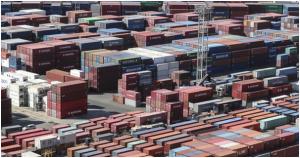
The Ministry of Trade, Industry and Energy announced on Dec. 1 that South Korea’s trade deficit was US$7.01 billion in November this year, when its exports decreased 14 percent year on year to US$51.91 billion and imports increased 2.7 percent to US$58.93 billion. Its trade deficit continued for eight months and its exports fell for the second consecutive month after having fallen in two years in October.
Still, South Korea’s exports for January to November increased 7.8 percent year on year to US$629.1 billion. This year is the first when exports topped US$600 billion before the end of November.
South Korea’s trade deficit for the 11 months is US$42.6 billion. The deficit topped US$40 billion for the first time since records began in 1956. The previous high is US$20.62 billion, which was recorded in 1996.
This rapid increase in trade deficit is mainly because of crude oil, gas and coal imports. Last month, the imports totaled US$15.51 billion, up 27.1 percent from a year ago.
The increase has to do with semiconductor exports, too. Last month, the exports dropped 29.8 percent year on year to fall for the fourth consecutive month. Likewise, petrochemical exports dropped 26.5 percent and wireless communications-related exports decreased by 18.7 percent, although automobile and petroleum product exports increased 31 percent and 26 percent, respectively. Exports to China and the ASEAN decreased 25.5 percent and 13.9 percent while those to the United States, the Middle East and the European Union increased 8 percent, 4.5 percent and 0.1 percent, respectively.
Last month, South Korea’s trade deficit with China continued for two months. Specifically, its exports to and imports from China were US$11.38 billion and US$12.14 billion, down 25.5 percent and down 11.1 percent year on year, respectively. Semiconductor and general machinery exports to China dropped 36.1 percent and 21.1 percent, respectively.

